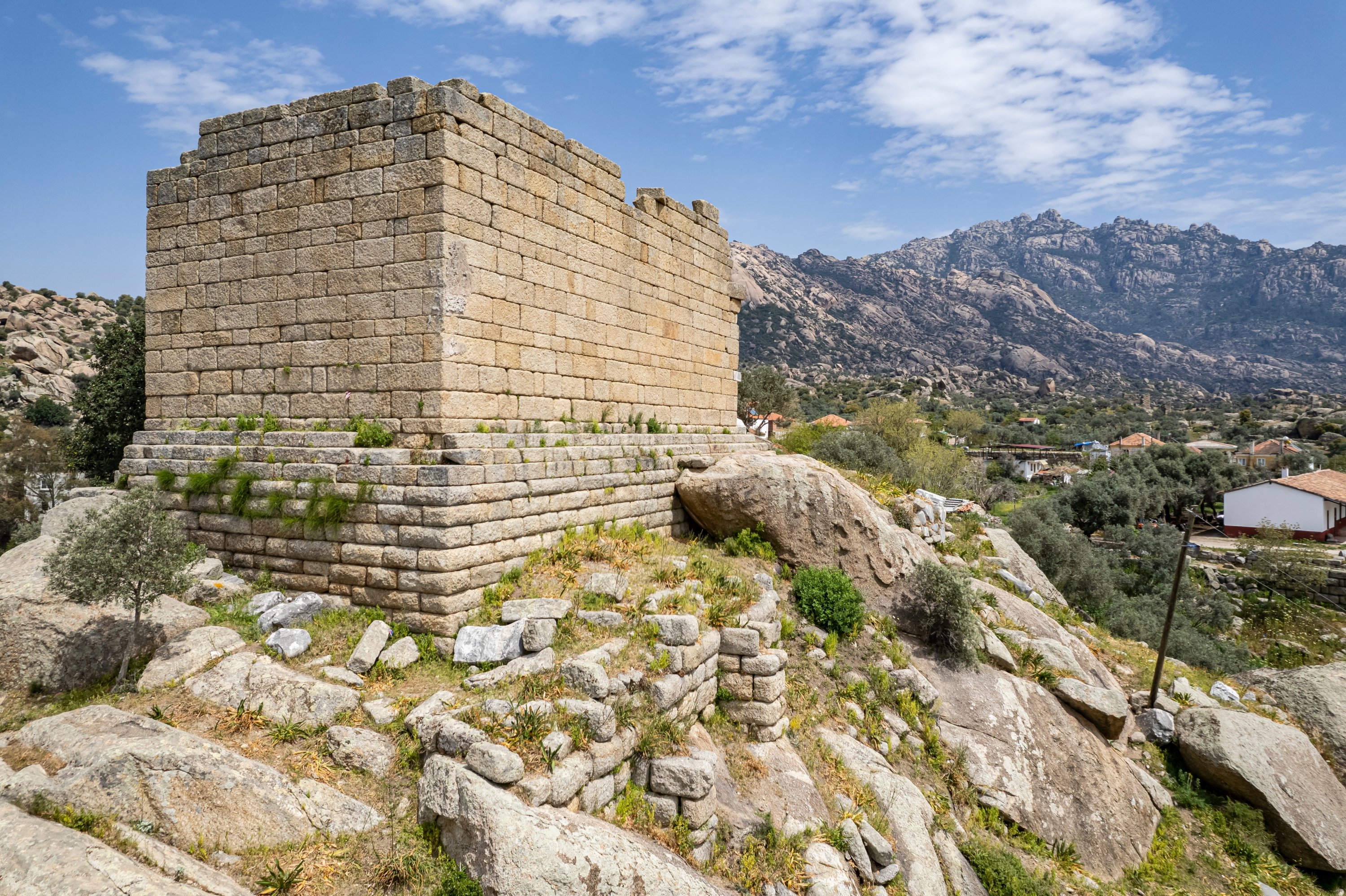© Turkuvaz Haberleşme ve Yayıncılık 2026
Located in Muğla, the town that houses Bodrum’s International Airport, Milas is a much lesser-known area these days than it once was.
With a legacy spanning back to the ancient Carian civilization and medieval times, Milas has 27 archaeological sites worth visiting, including the nearby Mausoleum of Hecatomnus, which is classified as a tentative UNESCO World Heritage Site.
Interestingly, this site, which dates back to the early fourth century B.C. hosts the Temenos Wall, a podium, a column and a sarcophagus, and even then it didn't make my list of the top five sites to see in Milas. This shows how rich in archaeology and history this region of Türkiye is.
Meanwhile, Bodrum itself also boasts the often-overlooked Mausoleum of Halicarnassus, which is one of the Seven Wonders of the Ancient World. Even though this site is worth a visit, it pales compared to some of the ancient towns and complexes that can open the door to your imagination to picture what life must have been like in ancient times. Coupling those sensations with the slightly cooling temperatures, you can easily immerse in history. So, as you will see, whether you are visiting Bodrum, Marmaris, Didim or even Datça, taking an archeological day trip to Milas is something worthy of your to-do list.
That said, here is a pick of the top five ancient sites worth visiting in Milas:
Iassos is an ancient Greek and Roman city located on the Bodrum Peninsula, just past the Bodrum Airport and not far from Milas. The city features ancient walls, a well-preserved agora, Roman baths and a Hellenistic theater. It's known for its picturesque setting along the coast, a neighboring quiet seaside town also referred to as Kıyıkışlacık and for housing local fish restaurants. Due to its proximity to Bodrum center, making it just an approximate hour-long drive, I recommend planning the adventure with a trip to Uyku Vadisi and the caves of Incirliin, which have dozens of caves located in the deep forest, making for a welcoming respite in nature. Uyku Vadisi also has a restaurant that can make the perfect pitstop on your journey.
Also known as the "City of Eternal Love," Stratonikeia is an ancient Carian city located 30 kilometers (18.6 miles) from Milas toward Muğla. Stratonikeia is known for its historical significance and impressive architecture and boasts of well-preserved structures, including a theater, Roman baths and a necropolis. Referred to as a living archeological city for having so many well-preserved sections, Stratonikeia also has remnants of one of the largest gymnasiums in the classical world.
Currently on the tentative list of UNESCO World Heritage sites, hundreds of artifacts continue to be uncovered from the site in ongoing excavations. From Stratonikeia, a relaxing and entertaining pitstop could be a visit to Pınarbasi Restaurant, located just a few kilometers toward Yatağan, but set in a forested area with mountain springs and tables spread out actually in them. A great place to get your feet wet, cool down and relax to the tune of flowing water as you dine on classic Turkish offerings.
While certainly much more off the beaten path, Labraunda is also one of the most significant archaeological sites in the Milas region. It was an ancient sanctuary dedicated to the Carian God Zeus Labraundos and the site contains a temple, an agora, an amphitheater, and various other ruins. Dating back to 600 B.C., Labraunda is known most for its well-preserved ancient architecture and its Temple of Zeus and for having spectacular hilltop views of the sunset.
You can also expect to be the sole visitors at this site whose entrance is via a windy road, which is just shortly over an hour’s drive from Bodrum.
The most popular pitstop on the way is called Durmuş’un Yeri and it is set in a grassy garden and serves up traditional Turkish fare. A popular spot for those in Milas, it can be a boisterous play area for children and your table may end up being visited by strolling minstrels.

Last, but certainly not least, located in present-day Kapıkırı, a village that lies off the shore of Lake Bafa, Heraclea by Latmus is a truly stunning archaeological site in a region marked for its flora and fauna variation.
The site contains ruins of an ancient city, including a theater, agora and temple remains and the unique boulder formations contain rock paintings. Pair the outing to this site with a day devoted to enjoying the lake and the town, which is a popular tourist destination, and enjoy a meal, which most likely will be a gözleme, at a couple of restaurants that are situated right along the lake.
This ancient Carian city, located just outside Milas, is known for its impressive castle, well-preserved fort, and city walls that display the architecture of the early Turkish beylic settlements. The ruins include a mosque, a church, hammams and remnants of residential buildings.
It was visited by both traveler and scholars Ibn Battuta and Evliya Çelebi and the medieval city is also on the tentative list for the UNESCO World Heritage cultural category. The site also has remains from the Hellenistic period, including a 4th-century temple.
A visit to this site could be combined with a trip to the nearby Milas Museum Milas of Archaeology and Ethnography, which is a valuable resource for those interested in the history and archaeology of the region. The museum houses a collection of artifacts, including sculptures, inscriptions, pottery, and items from various archaeological sites.
These archaeological sites in and around Milas offer a glimpse into the rich history of the region, spanning from ancient Greek and Roman periods to later civilizations, and exploring these sites provides a unique opportunity to learn about the cultural and historical heritage of southwestern Türkiye.
